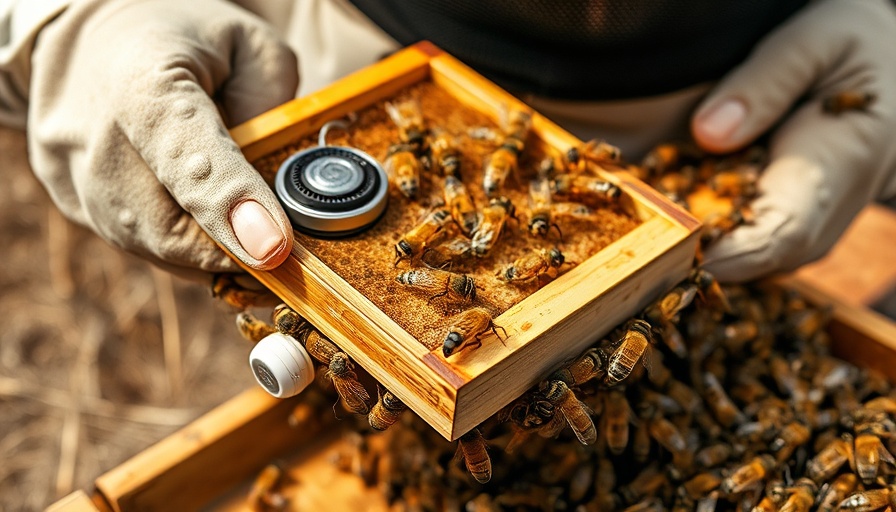
Innovative Beehive Sensors: A Game-Changer for Honeybee Conservation
As global honeybee populations face alarming declines due to pesticides, habitat destruction, and climate change, a promising technological development offers hope for their survival. Researchers at the University of California, Riverside (UCR) have pioneered a low-cost system called the Electronic Bee-Veterinarian (EBV), which could revolutionize the way beekeepers monitor and protect their colonies.
The Technology Behind the Buzz
The EBV utilizes inexpensive heat sensors along with sophisticated forecasting models to keep a vigilant watch on hive temperatures. Honeybees are known to regulate their hive temperatures to create a stable environment essential for their health and survival. When temperatures deviate from the norm, it can signal impending crises such as colony collapse. The EBV can notify beekeepers of these fluctuations, enabling timely interventions.
Your Lifeline in Times of Crisis
With real-time data analytics at their fingertips, beekeepers can now react proactively to threats against hive stability. This system can predict when extreme cold or heat is on the horizon, and armed with this knowledge, beekeepers can adjust their strategies accordingly. This new approach moves beyond the traditional reliance on manual checks, reducing unnecessary labor and improving outcomes.
A Simpler Way to Gauge Hive Health
At the core of the EBV's innovation is a user-friendly metric dubbed the 'health factor.' This numerical gauge ranges from zero to one and provides a snapshot of hive vitality, making it accessible even for beekeepers without technical training. A health factor nearing one indicates a robust colony, while lower values signal potential issues that require immediate attention.
Why Honeybees Matter
Understanding the significance of honeybees makes the urgency of such technologies clear: Over **80** crops depend on honeybee pollination, contributing a staggering **$29 billion** to U.S. agriculture annually. However, alarming statistics reveal that over **55%** of honeybee colonies were lost last year alone due to environmental stressors. Without effective interventions, food systems worldwide are at serious risk.
Looking Towards the Future of Beekeeping
The researchers are not stopping at mere monitoring; the next phase of the EBV involves incorporating climate controls that can automatically adjust hive temperatures based on predictive algorithms. This will allow beekeepers to create more stable environments for their colonies, ensuring they thrive even in challenging conditions.
Professor Boris Baer, an entomologist at UCR, comments on the potential of EBV to fundamentally change beekeeping practices. He emphasizes that the system seamlessly integrates with existing hive setups, offering a cost-effective solution for beekeepers who might be reluctant to adopt high-priced commercial sensors.
Join the Movement to Save Our Bees
The EBV represents a beacon of hope for honeybee populations and an innovative solution to a complex crisis. As beekeepers adopt this cutting-edge technology, they become part of a vital movement to safeguard both bee health and global food security. Together, we can ensure that our ecosystems remain rich and diverse, supported by the hardworking bees that sustain them.
Want to learn more about how technology is helping in environmental conservation? Explore more at our website for the latest updates!
 Add Row
Add Row  Add
Add 

 Add Row
Add Row  Add
Add 

Write A Comment